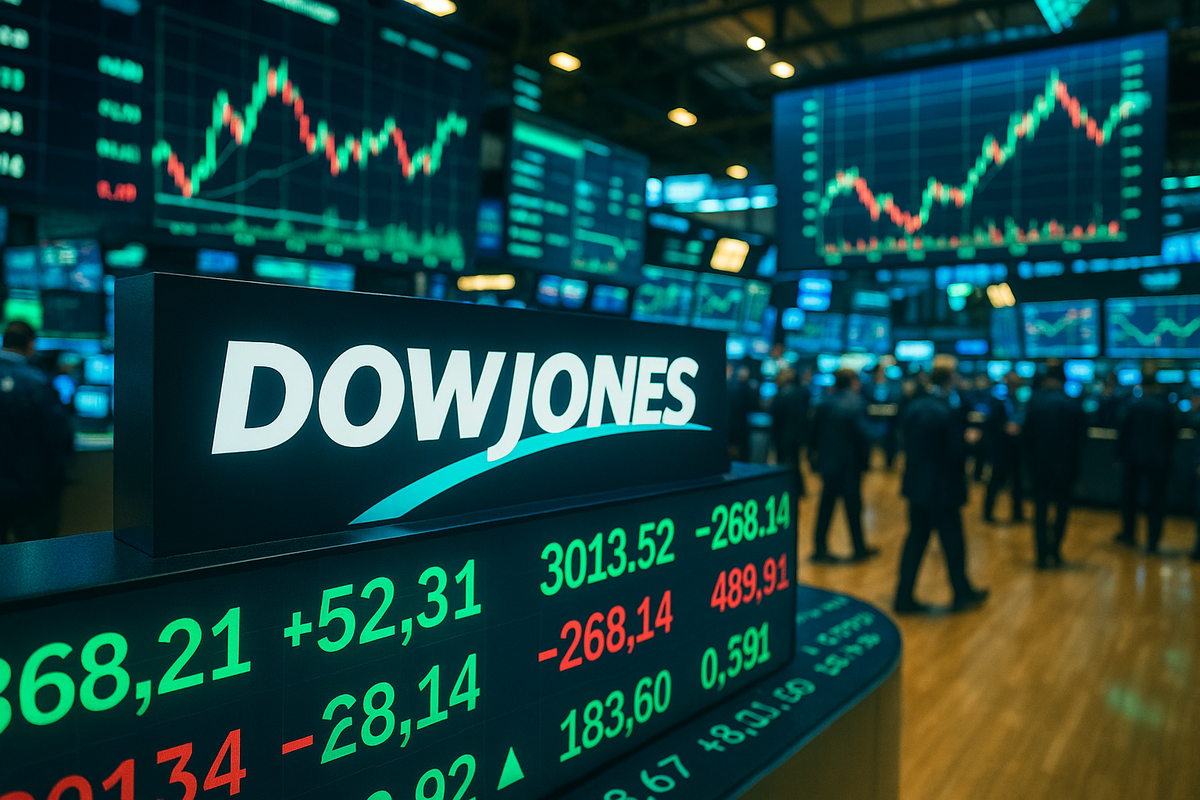
The Dow Jones Industrial Average (DJIA), often simply referred to as "the Dow," stands as one of the most enduring and widely recognized stock market indices globally. It serves as a crucial barometer for the overall health of the U.S. stock market and, by extension, the broader economy. For investors and financial observers, understanding the Dow is essential as its movements often provide a quick "temperature check" of economic conditions and investor sentiment.
Key Information
The Dow Jones Industrial Average is a stock market index that tracks the performance of 30 prominent, large, publicly owned "blue-chip" companies listed on U.S. stock exchanges, primarily the New York Stock Exchange (NYSE) and Nasdaq. Despite its name, the DJIA is no longer limited to industrial companies and includes major corporations from various sectors such as technology, healthcare, consumer goods, and finance, excluding only utilities and transportation, which are covered by separate Dow Jones averages. These companies are generally well-established, large-cap firms with consistently stable earnings.
The DJIA is a price-weighted index. This means its value is determined by summing the stock prices of the 30 companies included in the index and then dividing that total by a factor known as the "Dow Divisor." The Dow Divisor is adjusted periodically to account for corporate actions such as stock splits, mergers, acquisitions, divestitures, and changes in the index's components, ensuring the index's historical continuity. Due to its price-weighted nature, stocks with higher share prices have a greater influence on the index's overall value and movements than those with lower share prices, regardless of the company's total market capitalization.
Context and Background
Historical Context
The Dow Jones Industrial Average boasts a rich history dating back to the late 19th century:
- Founding (1882): Dow Jones & Company, a financial news publisher, was founded in 1882 by Charles Henry Dow and Edward D. Jones.
- Early Indices (1884): In 1884, the company began publishing a daily index of railroad company stocks, a precursor to the DJIA.
- Inception of DJIA (1896): The Dow Jones Industrial Average itself was first calculated and published on May 26, 1896, by Charles Dow, who was also the co-founder of The Wall Street Journal. It was named after him and his business associate, statistician Edward Jones.
- Original Composition: Initially, the index comprised 12 stocks, mostly representing key industries of the time such as agriculture, coal, oil, and steel. The first published value of the Dow Jones was 40.94.
- Expansion: The number of companies in the index expanded to 20 in 1916 and then to its current 30 in 1928.
- Evolution of Components: The composition of the DJIA changes over time to reflect shifts in the U.S. economy. A committee from S&P Global and The Wall Street Journal selects the 30 companies, considering factors like stock prices, market capitalization, trading volumes, and sector classification. For instance, General Electric (NYSE: GE) was an original component in 1896 and remained on the index for the longest period, until 2018, though it was dropped and re-added twice in its early history.
Comparison to Industry Norms
Unlike other prominent indices such as the S&P 500 (NYSEARCA: SPY) or the Nasdaq Composite (NASDAQ: IXIC), which are market-capitalization-weighted, the DJIA's price-weighted methodology is a key differentiator. In market-capitalization-weighted indices, companies with larger market values have a greater impact on the index's performance. This difference means that a significant price movement in a high-priced Dow component can have a more substantial effect on the index than a similar percentage move in a lower-priced, but potentially larger market-cap, company within the Dow.
Relevant Trends
The DJIA's composition has consistently evolved to reflect the changing landscape of the U.S. economy. Historically dominated by heavy industrial companies, it now includes a diverse range of sectors, with technology and healthcare companies playing increasingly significant roles. This evolution ensures the index remains relevant as a representation of leading American businesses.
Implications
Short-Term Implications
In the short term, movements in the Dow Jones Industrial Average are closely watched by investors, analysts, and the media as an immediate indicator of market sentiment. A significant rise often signals positive investor confidence and economic optimism, potentially leading to further buying activity. Conversely, a sharp decline can trigger concerns about economic slowdowns or corporate earnings, potentially leading to sell-offs. Daily fluctuations are often influenced by news events, economic data releases, and corporate earnings reports.
Long-Term Outlook
Over the long term, the DJIA serves as a historical benchmark for U.S. stock market performance. Its sustained upward trend over decades reflects the long-term growth and resilience of the American economy and its leading corporations. While short-term volatility is inherent, the long-term outlook for the Dow is generally tied to the overall health and innovation of the U.S. economy. It provides a valuable perspective on the historical returns of large-cap U.S. equities.
Factors That Could Change the Situation
Several factors can influence the Dow's performance and its future trajectory:
- Economic Growth: Strong economic growth, characterized by rising GDP, low unemployment, and healthy consumer spending, typically supports higher corporate earnings and, consequently, a rising Dow.
- Interest Rates: Changes in interest rates by the Federal Reserve (FED) can significantly impact the stock market. Higher rates can make borrowing more expensive for companies and reduce the attractiveness of equities compared to fixed-income investments.
- Corporate Earnings: The collective earnings performance of the 30 Dow components is a primary driver of the index. Strong earnings growth tends to push the Dow higher, while disappointing results can lead to declines.
- Geopolitical Events: Global events, such as trade disputes, political instability, or international conflicts, can introduce uncertainty and volatility into the market, affecting the Dow.
- Technological Advancements and Innovation: The ability of Dow components to innovate and adapt to technological changes is crucial for their long-term success and, by extension, the index's performance.
- Changes in Composition: While infrequent, changes to the 30 companies included in the Dow can impact its sector representation and overall performance. The committee responsible for selecting components aims to ensure the index remains a relevant reflection of the U.S. economy.
Summary
The Dow Jones Industrial Average is a venerable and highly influential stock market index that tracks 30 leading "blue-chip" U.S. companies. Established in 1896, it is a price-weighted index, meaning higher-priced stocks have a greater impact on its value. The Dow serves as a key economic barometer, reflecting the health of the U.S. stock market and economy. Its historical significance, representation of major industries, and widespread recognition make it an indispensable tool for understanding market trends and investor sentiment, both in the short and long term. Its continued evolution ensures its relevance as a snapshot of America's corporate landscape.




